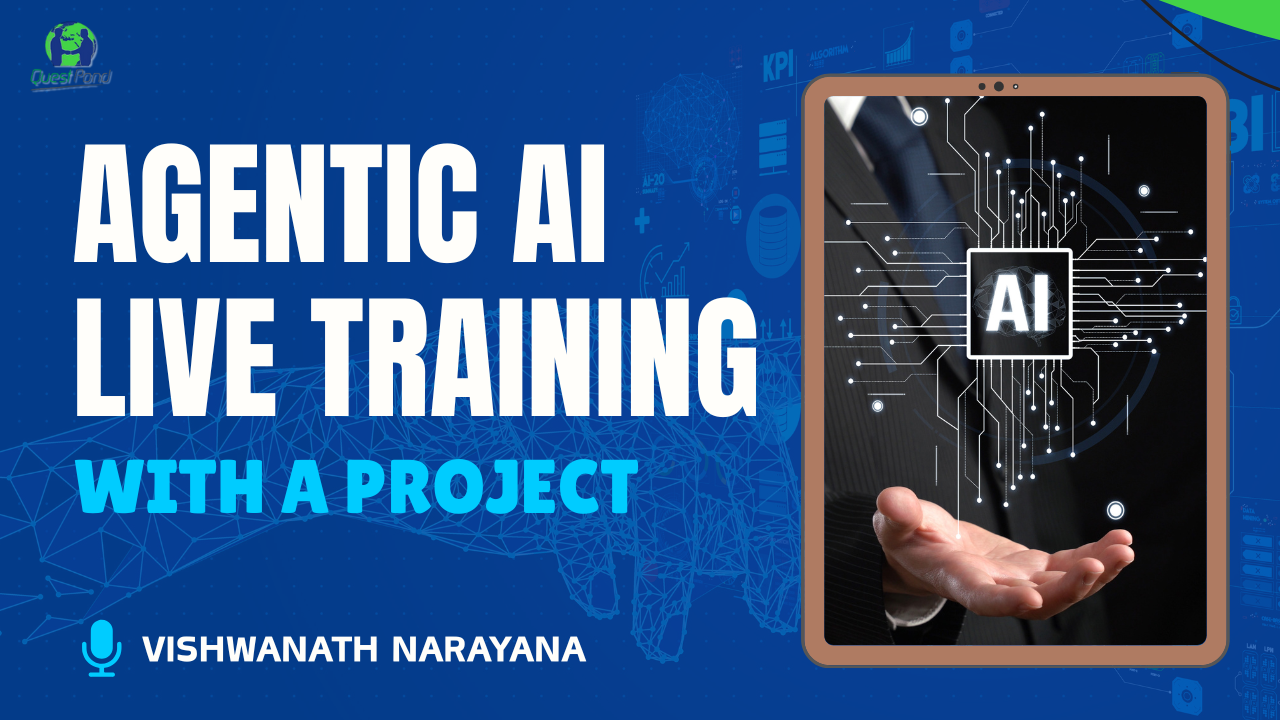What you'll learn :-
This 20 hour crash course teaches how to build agentic AI systems in Python using OpenAI (GPT-4/4o), LangChain, and related tooling. The course is hands-on with notebooks for each module and a multi-agent chatroom capstone implemented both as a console app and a Streamlit web UI.
Training Content
- Concepts, environment setup, first OpenAI API call
- Hands-on tasks:
See corresponding Jupyter notebook for step-by-step code and examples.
Module 2: LLM Fundamentals & Prompt Engineering (2 hours)
- Prompts, templates, few-shot, structured outputs.
- Hands-on tasks:
See corresponding Jupyter notebook for step-by-step code and examples.
Module 3: Building Simple Agents (2 hours)
- Agent loops, LangChain basics
- Hands-on tasks:
See corresponding Jupyter notebook for step-by-step code and examples.
Module 4: Tools, Memory & Reasoning (3 hours)
- Tools, memory stores, ReAct
- Hands-on tasks:
See corresponding Jupyter notebook for step-by-step code and examples.
Module 5: Multi-Agent Systems (2 hours)
- Agent collaboration patterns
- Hands-on tasks:
See corresponding Jupyter notebook for step-by-step code and examples.
Module 6: Integrating APIs & External Tools (3 hours)
- Connect to APIs, file handling
- Hands-on tasks:
See corresponding Jupyter notebook for step-by-step code and examples.
Module 7: Custom Agent Workflows & Planning (3 hours)
- Task decomposition, vector stores
- Hands-on tasks:
See corresponding Jupyter notebook for step-by-step code and examples.
Module 8: Capstone — Multi-Agent Chatroom (3 hours)
- Build multi-agent chatroom (console + Streamlit)
- Hands-on tasks:
See corresponding Jupyter notebook for step-by-step code and examples.
Capstone: Multi-Agent Chatroom
- Two implementations are included:
- Console-based: a lightweight terminal app that runs locally.
- Streamlit-based: provides a web UI suitable for demos and classrooms.
Both use OpenAI as the LLM backend and LangChain patterns for agents, memory, and tool invocation.
Setup & Requirements
- Run:
pip install -r requirements.txt
Set your OpenAI API key in environment variable OPENAI_API_KEY or use a .env file.
Example: export OPENAI_API_KEY='sk-...'
Files in ZIP package
- 01_intro_agentic_ai.ipynb
- 02_prompt_engineering.ipynb
- 03_simple_agents.ipynb
- 04_tools_memory_reasoning.ipynb
- 05_multi_agent_systems.ipynb
- 06_api_integration.ipynb
- 07_custom_agent_workflows.ipynb
- 08_capstone_multiagent_chatroom_console.ipynb
- 08_capstone_multiagent_chatroom_streamlit.ipynb
- README.md
- requirements.txt
World-class training and development programs developed by top teachers
Whats Included
- World-class training teacher
- Bench has zero learning curve
- We handle the rest.



